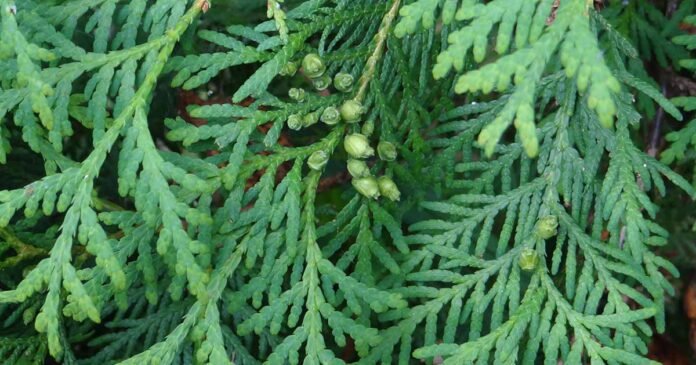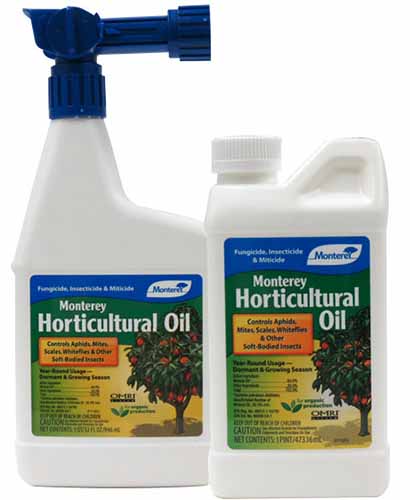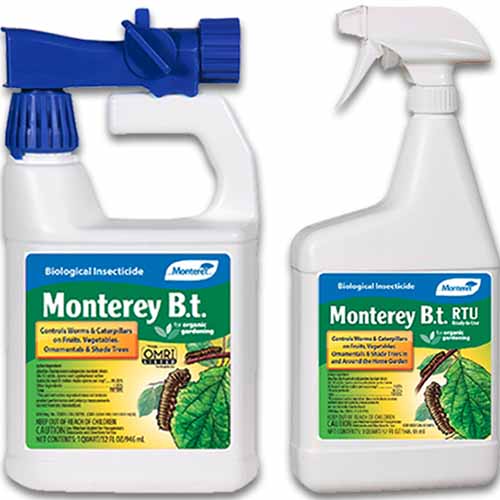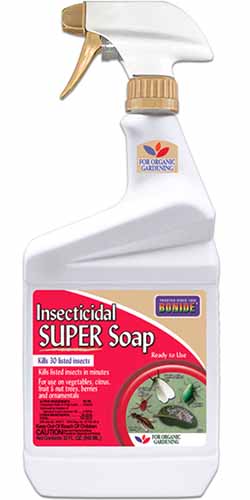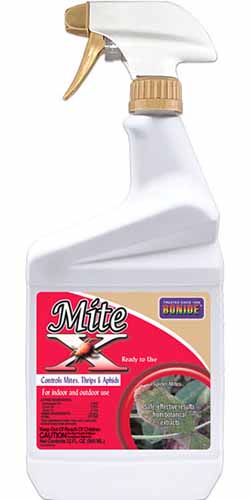Transplanting
Transplanting should be done in the spring after the ground is workable or in the fall.
Dig a hole twice as wide and the same depth as the container your juniper is growing in.
Remove your plant from its container by squeezing the sides to loosen the soil, then gently pull it out and loosen the roots.
Place it in the ground and fill in around it with the soil you removed from the hole.
Give the plant a good soaking to settle the soil.
Pests and Disease
Junipers are sturdy, and they don’t often fall victim to diseases or pests. They’re also resistant to many of the herbivores that plague other plants.
That said, you might bump up against some issues now and then. Here’s what to watch for:
Herbivores
I know, you’re probably thinking that you’ve heard junipers aren’t appealing to herbivores such as rabbits and deer.
There are plenty of articles on the internet touting these hardy plants as deer and rabbit proof, and it’s true that they’re not often their first choice.

I hate to be the one to bring you bad news, but animals will take a bite out of juniper shrubs, especially if other food is scarce.
Damage can range from no big deal to devastating, depending on the species, cultivar, and the age of the plant.
A tiny sapling is extremely vulnerable, while an established shrub usually won’t be bothered much at all.
When I was living in Utah, deer (and rabbits) would regularly devour my juniper saplings, and one harsh winter, the deer ate all the foliage on my older Rocky Mountain junipers (J. scopulorum) from about six feet down.
Pests
There are a few common pests that attack junipers.
Pests are more likely to have an impact on stressed trees, so do your best to keep your plant healthy with good watering and feeding practices.
Aphids
Aphids are impossible to avoid, and at some point, every gardener will come in contact with them.
Junipers may be attacked by several types of aphids from different genera, but there is one group of species known as the giant conifer aphids (Cinara spp.) that are often found feeding on these shrubs in particular.
Aphids won’t kill an established juniper, but they can make the foliage turn yellow or brown. A secondary issue is that they leave behind a sticky substance called honeydew that attracts sooty mold.
Fortunately, they aren’t hard to get rid of. Spray your plant with a blast of water to knock the little pests loose. They rarely find their way back to a plant.
You can also apply horticultural oil spray, like this one from Monterey, which you can pick up at Arbico Organics.
Need more info? Our guide to dealing with aphids has lots more tips.
Bagworms
Want to know how bagworms (Thyridopteryx ephemeraeformis) got their name? The caterpillars create large bags during the fall that look a lot like conifer cones.
These bags are filled with hundreds of eggs.


When the larvae hatch in the spring, they crawl out and feed on the foliage.
While an established plant can probably survive an infestation, a stressed or young shrub can be completely defoliated and killed, especially if it’s attacked year after year.
If you spot the bags, remove and dispose of them.
A spray containing the beneficial bacteria Bacillus thuringiensis is also effective if applied in the spring when the larvae are emerging.
Monterey makes a liquid spray available at Arbico Organics.
Juniper Scale
Juniper scale insects (Carulaspis juniperi) are two millimeters long, with hard shells. In small numbers, they aren’t too much of a problem, but large infestations can kill plants over time.
The first sign is yellowish-brown foliage and an overall appearance of being dry and wilted. Later, branches die off, followed by the entire plant dying.
These insects suck the juice out of needles, leaving behind sticky honeydew.
Prune away infested branches. Make sure your plant is getting enough water and fertilizer, if necessary, since a healthy plant is better able to withstand this pest.
You can also use horticultural oils to suffocate the insects. Alternately, insecticidal soap will kill them off.
Try Bonide’s Super Soap, available at Arbico Organics.
You’ll likely need to reapply multiple times throughout the growing season. Check the manufacturer’s recommendations for application timing.
Spider Mites
Spider mites are a common garden pest, and spruce spider mites (Oligonychus ununguis) in particular enjoy a nibble on plants in the Cupressaceae family.
These tiny arachnids are too small to see, unless you get in really close. But if you notice fine webbing on your plant and tiny yellow spots on the needles, you likely have an infestation.
Unlike other mites, spruce mites prefer cool weather, so watch for them in the spring and fall.
As with aphids, a strong spray of water can knock the pests loose.
If that doesn’t work, a broad-spectrum insecticide like Bonide Mite-X can kill them off.
Arbico Organics carries this potent spray. Just be judicious in using it, as it can kill off beneficial bugs as well.
Disease
I know we spent a lot of time talking about how junipers are survivors, but that doesn’t mean they can’t fall ill now and then.
Keep an eye out for the following:
Cedar Apple Rust
Gymnosporangium clavariiforme and G. cornutum cause cedar apple rust in juniper shrubs, particularly J. virginiana.
In the summer, watch for large two-inch galls forming near the tips of the branches.


In the following spring, these galls produce long, jelly-like growths known as teliohorns that are filled with spores just waiting to blow away to infect other trees.
Junipers that are infected have stunted growth, may become weak, and can eventually die.
Apples, crabapples, hawthorns, and quince trees serve as alternate hosts for this disease, and when the spores leave the juniper, they go in search of these other trees to complete their life cycle.
Prune away any galls that you spot. They look like small walnuts or wrinkly bulbs at the ends of branches.
Needle Cast Fungus
Needle cast is a disease that causes the previous year’s needle growth to turn reddish brown and fall off the shrub. This typically happens in late winter.
The infected needles on the ground release spores that will go on to reinfect the tree the next year.


